Lecture 25: Consensus & Beyond
Reminders
Final Project:
- Short video due today
- Final submission next Friday, May 28, 5pm Eastern
All submissions to Google drive folder
Last Time
Consensus
- $n$ processes, each with private input
- some processes may crash
- must produce output satisfying following properties
- Agreement: all processes output the same value
- Validity: if all systems have the same input, they all output that value
- Termination: all (non-faulty) processes decide on an output and terminate after a finite number of steps
Our Goal
Theorem (FLP, 1985). There is no algorithm that achieves consensus in the presence of even a single faulty process.
- Assumes atomic read/write shared memory
- Special case: there is no wait-free protocol for consensus for any $n > 1$
- wait-free is stronger assumption than termination
- Consider binary consensus all inputs 0/1
Also Last Time
Lemma 2. Suppose $A$ solves consensus. Then there is a bivalent initial state.
- Recall a bivalent execution (or initial state) is an execution from which the output could be 0 or 1 (depending or scheduler)
Lemma 3. Every consensus protocol has a critical execution.
- $E$ is a critical execution if it is bivalent, but every extension of $E$ is univalent
- any process taking a single step from $E$ determines the output
These properties hold for all consensus protocols
Today
Finish the proof of FLP
Outline of Proof of FLP
Assume only 2 processes, $P_0$ and $P_1$
- Start from a critical execution $E$
- $E$ is bivalent, but any extension is univalent
- Consider all possibilities for next step:
- both threads
readfor next step - one thread
reads, the otherwrites - both threads
write
- both threads
- Show that in any case, we contradict either criticality of
Eor correctness of protocol
Assumptions
Without loss of generality:
- There are two processes $P_0$ and $P_1$
- $E$ is a critical state
- if $P_0$ has next step, resulting execution is $0$-valent
- if $P_1$ has next step, resulting execution is $1$-valent
Case 1: read/read
Assumption: next operations for both $P_0$ and $P_1$ are read
- Start from critical state $E$
- if $P_0$ steps next, output is
0 - if $P_1$ steps next, output is
1
- if $P_0$ steps next, output is
read/read
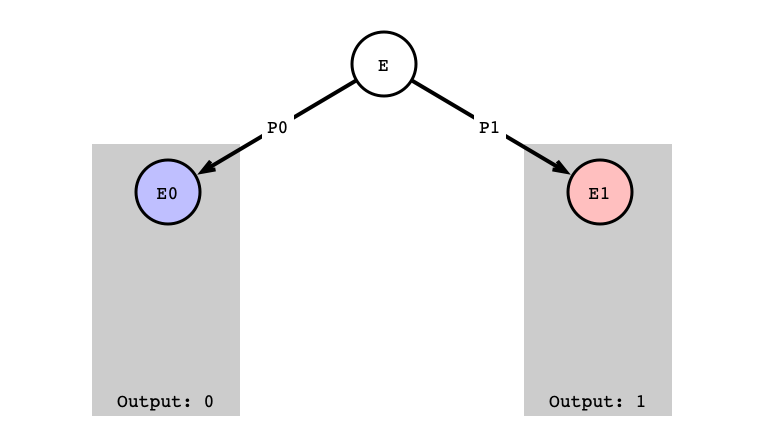
read/read Next Step
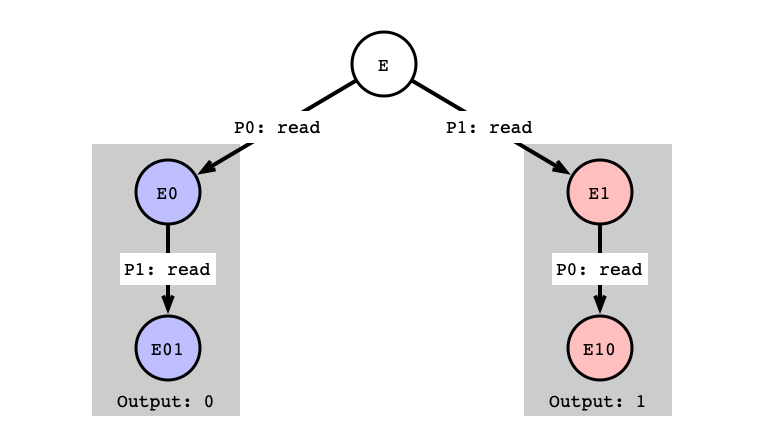
read/read Problem
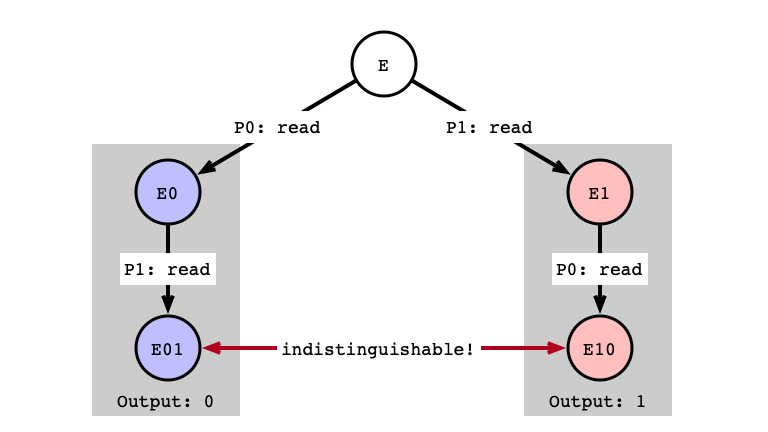
Case 2: read/write
Assumption:
- $P_0$’s next step is
read -
$P_1$’s next step is
write - Start from critical state $E$
- if $P_0$’s
readstep is next, output is0 - if $P_1$’s
writestep is next, output is1
- if $P_0$’s
read/write Setup
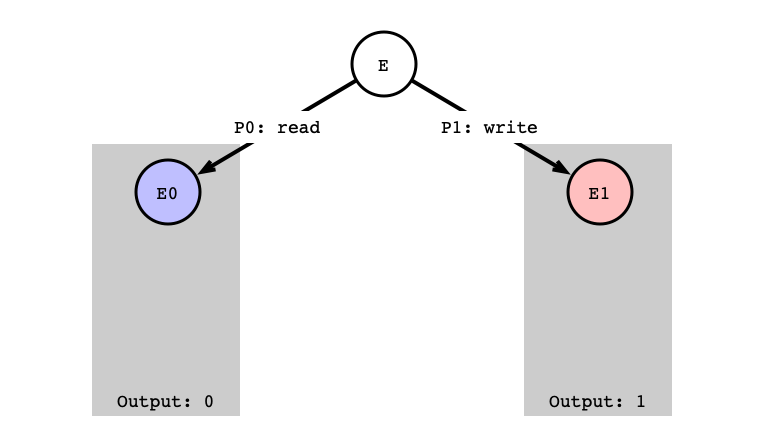
read/write Next Step
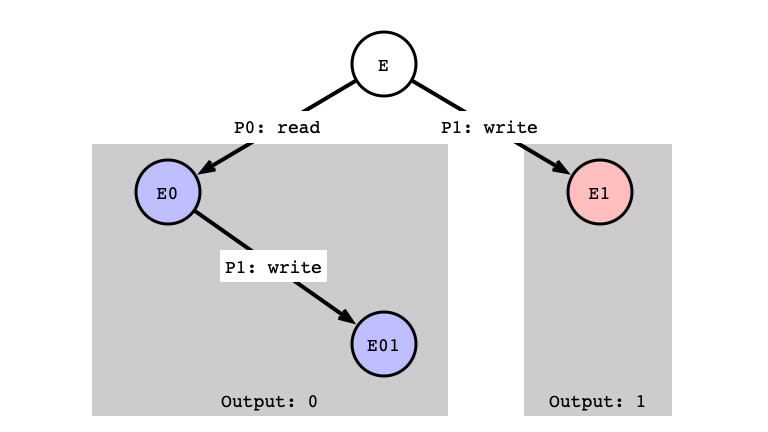
read/write Indistinguishable
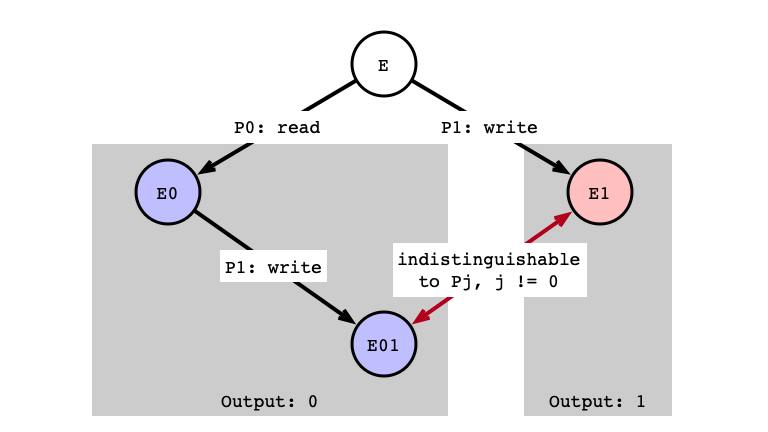
read/write $P_0$ Crashes

Case 3: write/write
Assumption: next operation for both $P_0$ and $P_1$ is write
Subcases:
- Sub-case a: write to different registers
- Sub-case b: write to same register
write/write Different Registers
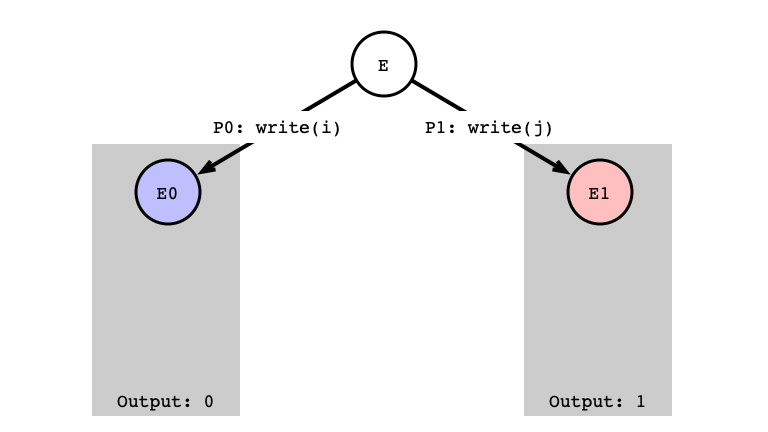
write/write Next Step
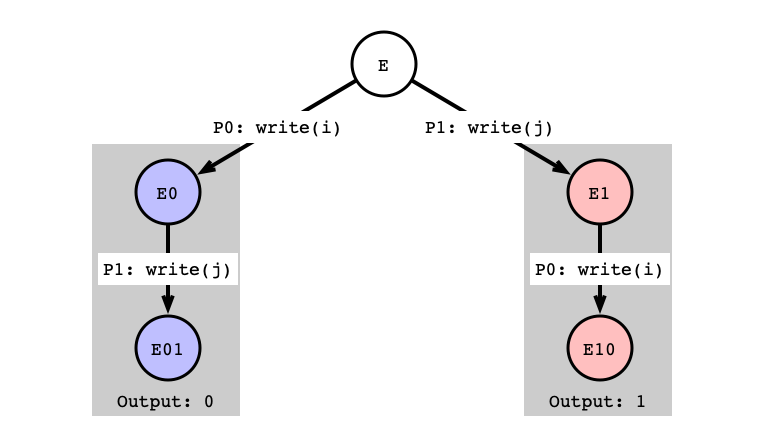
write/write Indistinguishable
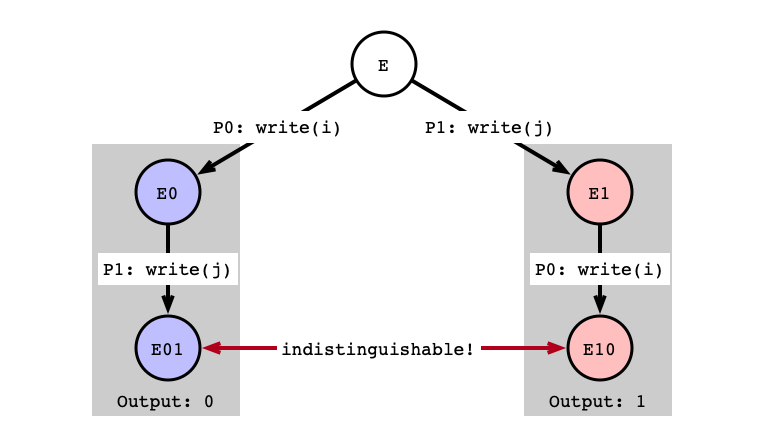
write/write Same Register
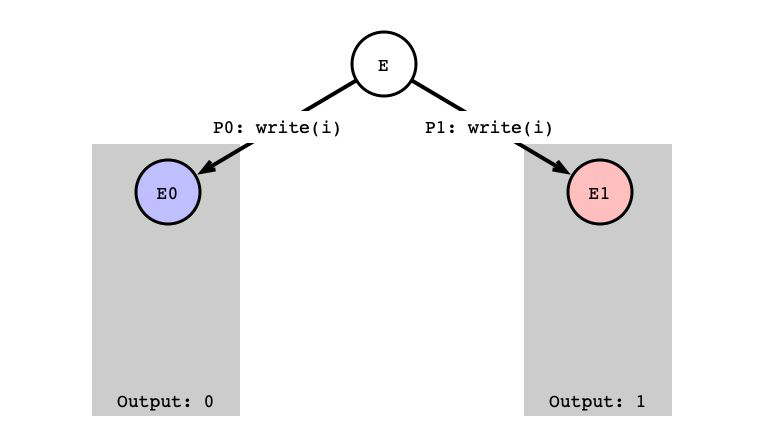
write/write Next Step
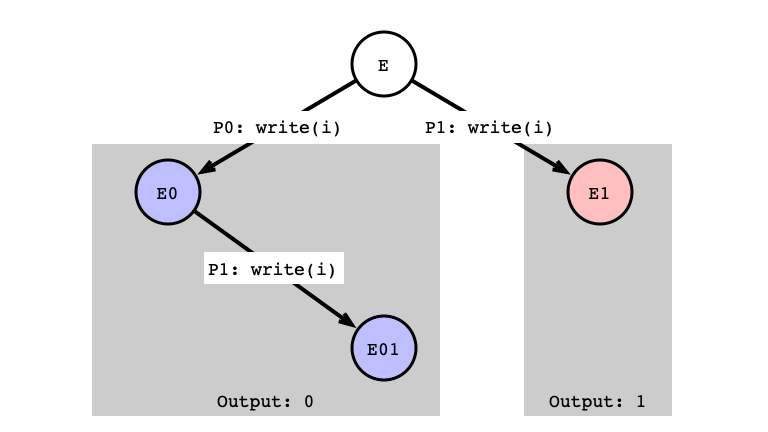
write/write Indistinguishable
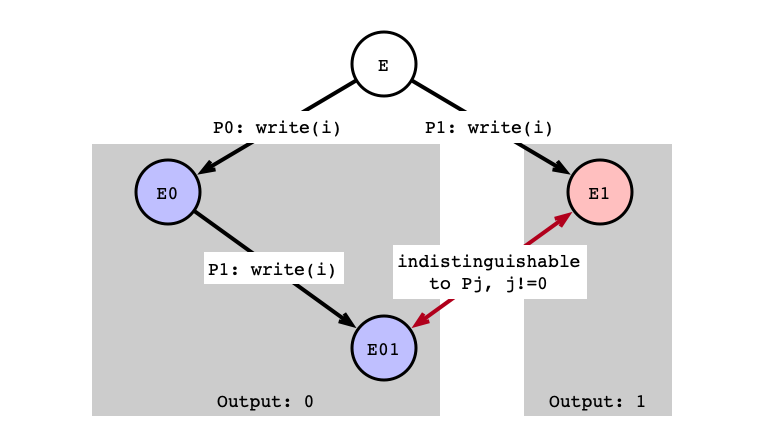
Conclusion
In general:
- Indistinguishable executions produce same output
Assuming a wait-free consensus protocol using only read/write registers:
- Showed there is a bivalent initial state
- Showed there is a critical execution
- Given a critical execution
- found indistinguishable states that must give different outputs
- this is a contradiction!
Remark. 1 and 2 hold for all protocols; 3 assumes only read/write registers
Consensus is Impossible?
Well not quite!
- We just proved impossibility in our computational model!
- atomic read/write registers
- wait-free (or faults)
- nasty scheduler!
Does the Model Reflect Reality?
- we have stronger primitives!
compareAndSet- …
- we might have better schedulers
- round-robin/synchronous
- faults could be worse
- Byzantine faults
Implications
- Atomic read/write registers are insufficient to solve fundamental tasks in parallel computing
- this drives the development of hardware primitives (e.g. CAS)
- We can quantify the computational power of primitive operations
- read/write registers have consensus number 1
- FIFO queues have consensus number 2
- given a wait-free queue, 2 threads can solve consensus (How?)
- $\implies$ cannot implement concurrent queues with read/write registers
- Can use
compareAndSetto achieve consensus (How?)
Coda
Four Morals
- Parallelism is powerful
- Communication is expensive
- cache locality and performance
- Synchronization is subtle
- locks
- concurrent data structures
- impossibility (FLP)
- Theory meets practice
- cannot reason about correctness/performance without understanding hardware
- hardare design informed by theory (e.g. atomics)